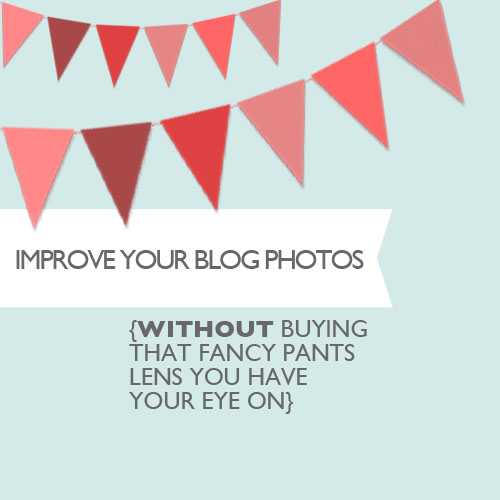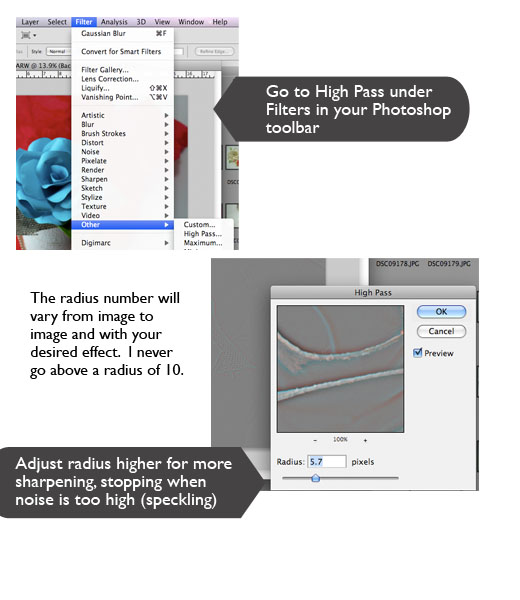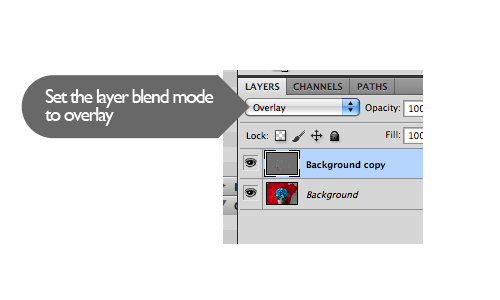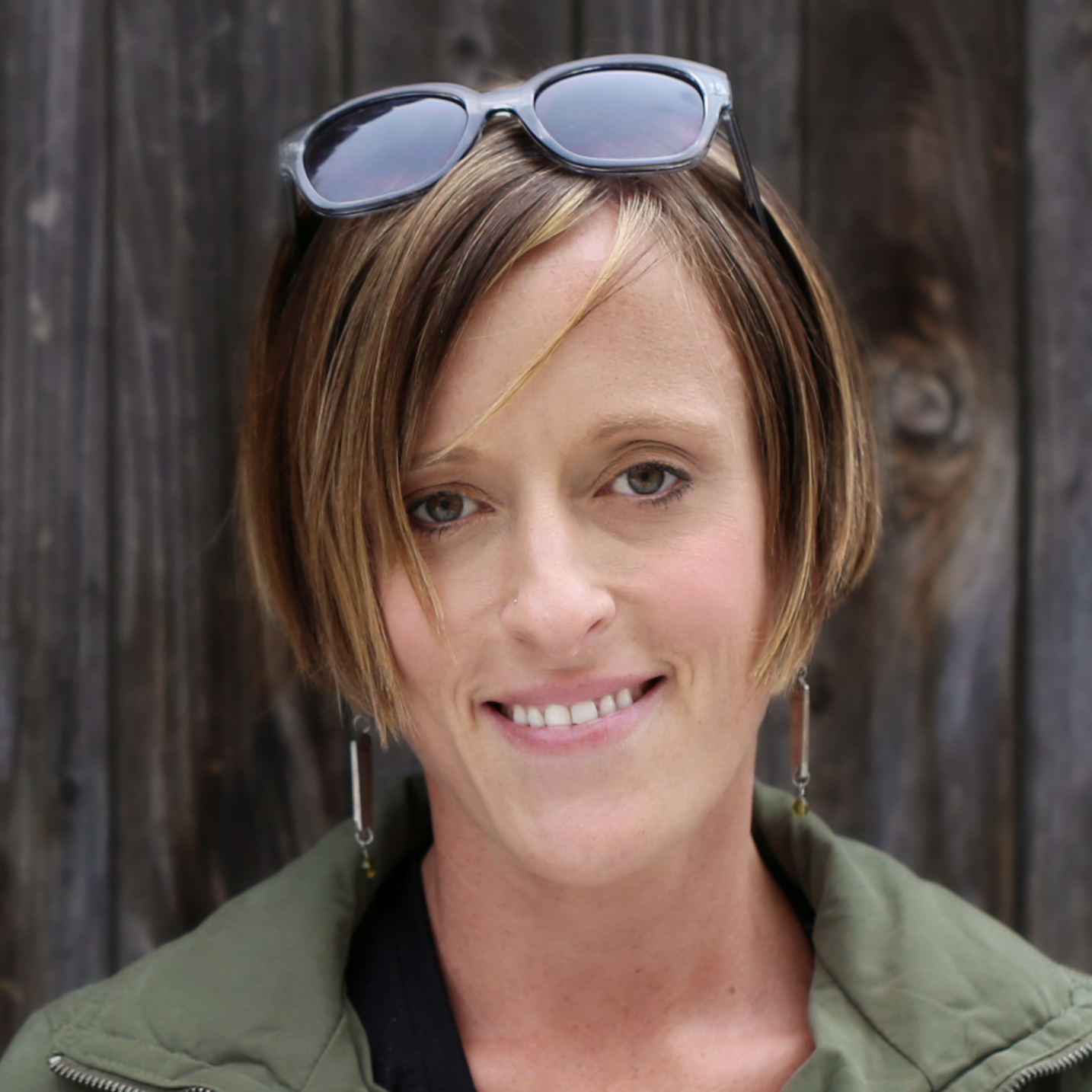While taking in your favorite projects from your fellow craft bloggers, do you sometimes feel like the photos you see are above and beyond what you are capable of with your current camera and lens? I have felt that way for awhile. With the massive amount of photos I see daily as pins, I decided it was time to take action. But what kind?
I am not a photographer. I know very little. I bought a DSLR when I got serious about blogging, and have never manually adjusted anything. For close ups, I turn the dial to the macro flower icon, for portraits, the face silhouette. That was all I needed for awhile. Now my blog is my baby, and I want to make it beautiful. The standard lens set that comes with my particular DSLR takes great shots, but I notice blur when I zoom in using Photoshop for a close ups of my jewelry and other projects. From my research, I deduced I needed to buy a macro lens… not cheap. I decided to stop in my local camera shop and ask someone more knowledgeable what they recommend. That is when I learned this about the Photoshop high pass filter.
Digital camera sensors and lenses blur the photo. They just do. The effect is negligible to many, but when you want that perfect shot with pristine detail to grab your reader’s eye, it is significant. You can easily resharpen using the high pass filter if you have Photoshop.
Here is an image I shot on my DLSR’s macro setting in my lightbox, before and after correcting the blur with the high pass filter.
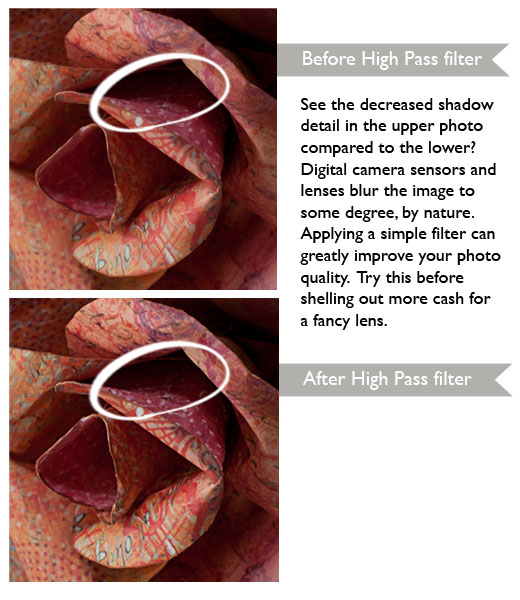 Pretty big difference for a few simple editing steps. According to the camera guy, this fix can be more profound than a high end lens.
Pretty big difference for a few simple editing steps. According to the camera guy, this fix can be more profound than a high end lens.
It is easy as pie. Just duplicate your background layer in Photoshop, then follow the steps below.
This works best if you shoot in RAW vs. shooting in jpg, as there is more information in the RAW file, so more detail to work with when sharpening. Most DSLRs have the option to shoot in RAW or jpg. Shooting RAW with take up more space on your card, and requires software capable of handling the file type (which Photoshop is). From what I have read, even if you don’t shoot RAW, you can still see improvement with this filter.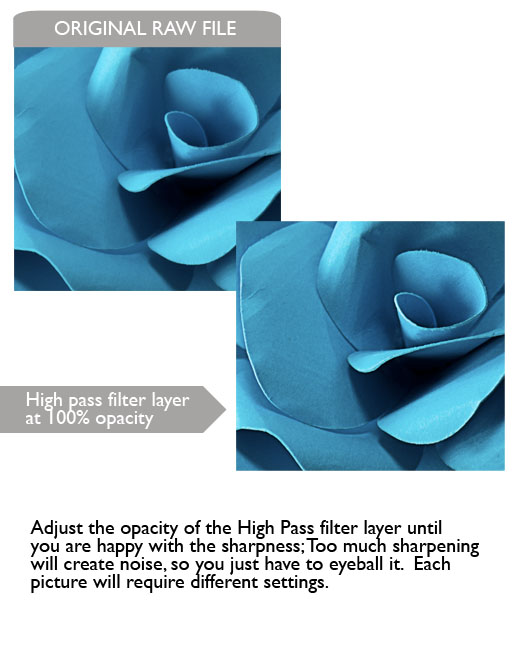
I am impressed with the difference and no longer feel the need to invest in a new lens. Yay! Thank you camera guy.
What are your favorite photo editing tricks?
If you want to learn more about this filter, and other sharpening methods, check out this informative guide to image sharpening at Cambridge in Colour.

